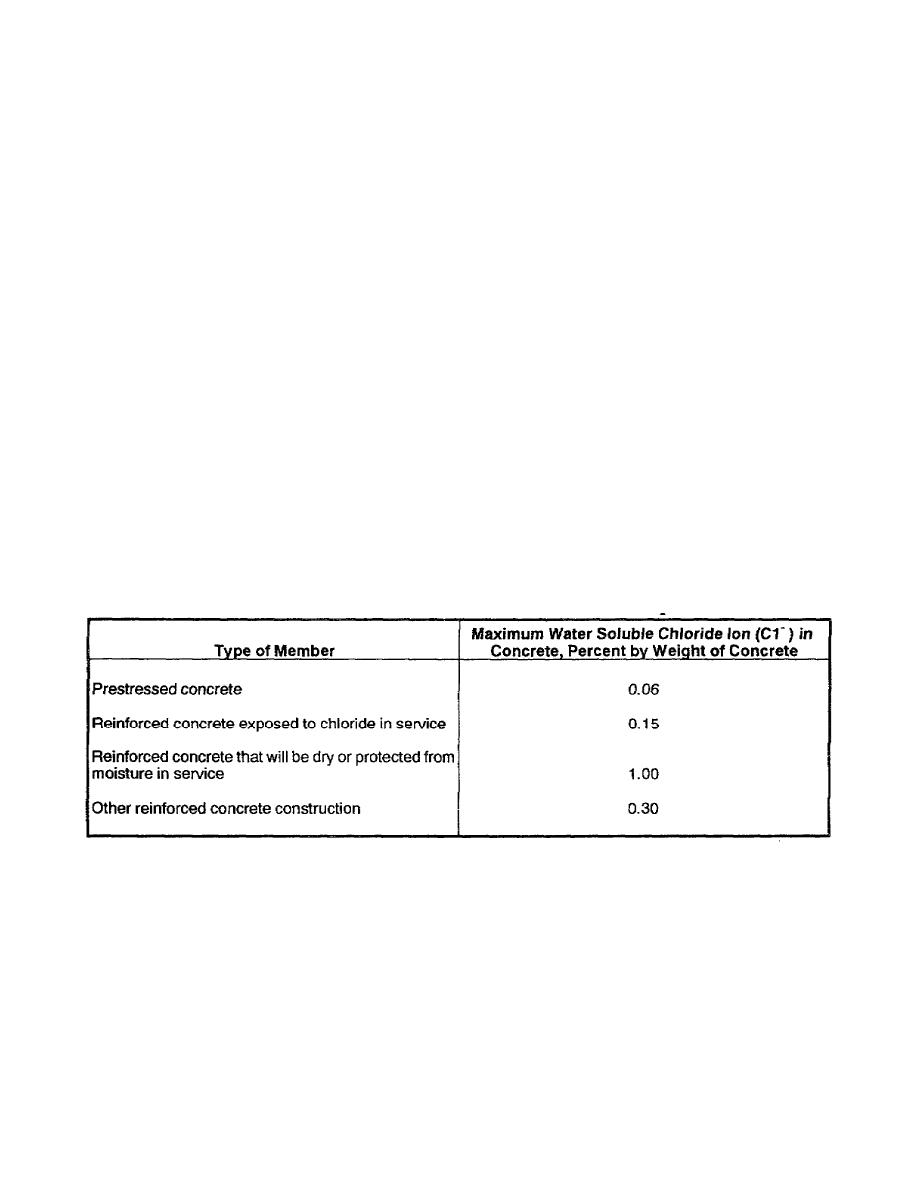
Tests for Air Content
Tests that determine air-entrainment in freshly mixed concrete measure only air volume, not air void
characteristics. Make tests regularly during construction, using plastic samples taken immediately after discharge
from the mixer and also from already placed and consolidated concrete. Standard methods to determine the air
content of plastic concrete include pressure (air-entrained meter), volumetric, and gravimetric method. Check
with your battalion as to which method is normally used.
Water-Reducing Admixtures
These reduce the quantity of mixing water required to produce concrete of a given consistency. They increase the
slump for a given water content.
Retarding Admixtures
These are sometime used to reduce the rate of hydration to permit placing and consolidating concrete before the
initial set. They also offset the accelerating effect of hot weather on the set. These admixtures generally consist
of fatty acids, sugars, and starches.
Accelerating Admixtures
These accelerate the set and strength development. Calcium chloride is the most common. Add it in solution
form as part of the mixing water but not exceeding 2 percent by weight of cement. Do not use calcium chloride or
other admixtures containing soluble chlorides in prestressed concrete, concrete containing embedded aluminum
which has permanent contact with galvanized steel (subject to alkali-aggregate reaction), or exposed soils or water
containing sulfates. Table 1-6 shows the limitations.
Table 1-6. Maximum chloride ion content for corrosion protection.
Pozzolans
These materials contain silica or silica and alumina. They combine with calcium hydroxide to form compounds
having cementitious properties. Because the properties of pozzolans and their effects on concrete vary
considerably, test them first to determine their suitability.
1-19
EN5466



 Previous Page
Previous Page
